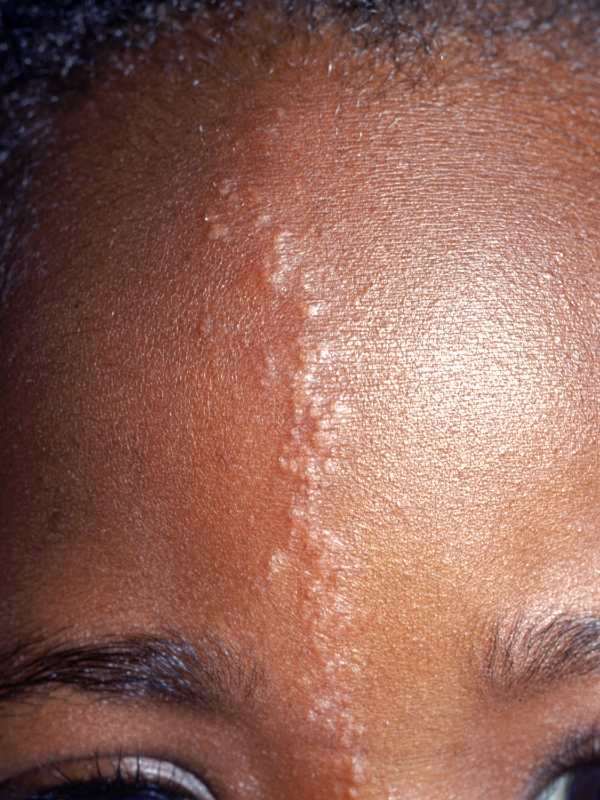Published on
Differential Diagnosis
- Cutaneous larva migrans
- Lichen striatus
- Lichen planus
- Linear cutaneous lupus erythematosus

Diagnosis
This patient was diagnosed with lichen striatus, an uncommon, self-limited skin disorder of unknown origin that most commonly occurs in children 5 to 15 years of age. In this patient, the vertical, flesh-colored, linear pattern along the facial lines of Blaschko helps to make the visual diagnosis.
Learnings/What to Look for
- There are few linear rashes in childhood. It’s important to understand the characteristics of the rash and look for other systemic findings to differentiate from other linear lesions
- The rash of lichen striatus features erythematous or flesh-colored smooth or scaly papules, sometimes with vesicopapules, in a narrow linear pattern along the lines of Blaschko
- Lichen striatus is more common in patients with atopic backgrounds, such as those with a personal or family history of atopic dermatitis, asthma, or allergic rhinitis. The rash most commonly occurs on the extremities, but can also occur on the trunk, buttocks, and face. Trauma, drug use, immunization, hypersensitivity reactions, viral infections, and pregnancy have been identified as potential causes of lichen striatus
Pearls for Urgent Care Management
- The urgent care provider should differentiate lichen striatus from other rashes that feature linear patterns. Cutaneous larva migrans is caused by worm infection and more often serpiginous and associated with outdoor travel. Linear lichen planus is more common in adults, more violaceous, and may have scattered lesions in addition to linear formation. Linear cutaneous lupus erythematosus is a lupus variant most common in children and often associated with other systemic or mucocutaneous features of lupus
- Lichen striatus is self-limited and no treatment is necessary. Topical steroids or emollients can be used to treat itching if it is present, but are typically not needed
- The lesions typically resolve in several months without scarring, although sometimes hypopigmentation is present. Dermatology follow-up is recommended for lesions that feature other unique characteristics or that don’t resolve after several months
Image and case provided by VisualDx (www.VisualDx.com/JUCM).
Read Similar Articles
- A 43-Year-Old Man With Pruritic, Scale Plaque And Vesicles On His Hands And Arms
- A 24-Year-Old Female With A New, Unexplained ‘Rash’ On Her Leg
A 9-Year-Old Girl with a New Rash on Her Face
1 2
